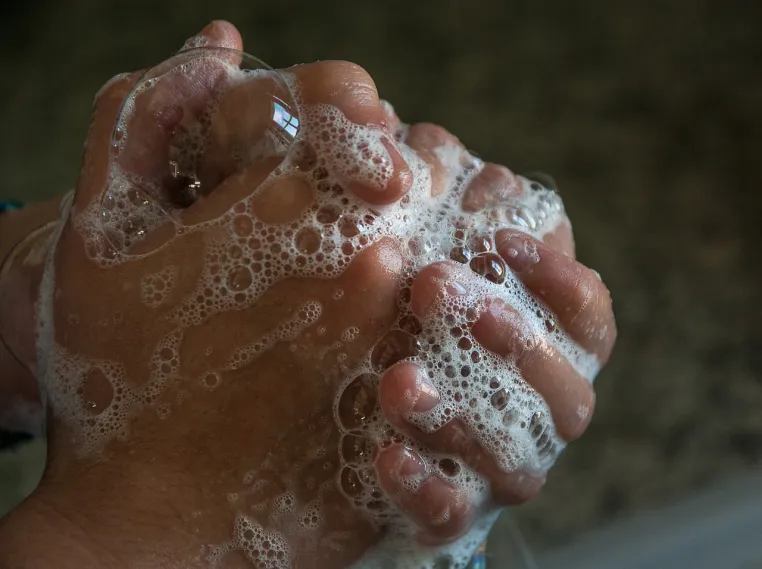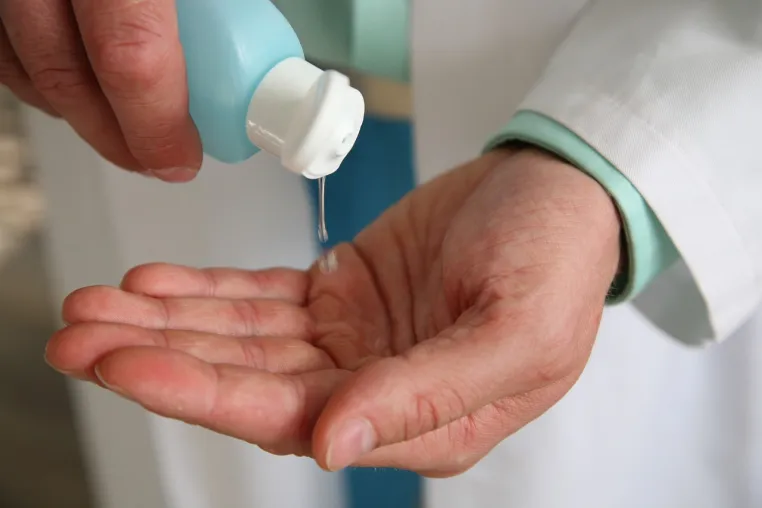Each year, millions of infections are acquired in medical settings - including at veterinary clinics. Many of these healthcare associated infections, also known as HAIs, can have devastating effects, resulting in severe conditions, such as sepsis, and even patient death, especially considering the increasing prevalence of a variety of antimicrobial resistant and zoonotic bacteria, such as MRSA. Yet, many of these HAIs are also preventable.
When left to freely colonise in veterinary premises that do not have satisfactory hygiene standards, these bacteria and infections can be transmitted to animals and humans alike.
Good infection-protection measures therefore can and should be adopted by the staff at every vet clinic, as they not only protect pet-patients, but they also protect the veterinary team overseeing their care.
Let’s examine the most common methods for HAI transmission in the vet clinic setting, as well as practices to implement to control infections and prevent them from spreading unnecessarily.
HAIs - Contamination via physical contact
While treating pet-patients at your veterinary clinic, you might come across an animal infected with a particular bacteria, pathogen or communicable disease. These infectants most are most commonly transferred to other animals or people through direct physical contact in the following forms:
- Direct body surface-to-body surface contact between you and the patient.
- Contact between the pet-patient and an inanimate object or environmental surface, such as exam tables, clinic floors, treatment equipment, kennel, cage doors, leashes and other items.
- Indirect contamination - contact between you, another staff member, pet-patient or pet owner with another animal or person who has been contaminated by the original source: touching someone or something that has touched or been touched by a contaminated person or animal.
Preventing the cycle of contamination
To prevent the transmission of infectious diseases and reduce the risk of antibiotic resistance caused by infectious outbreak and subsequent medication prescription, it is essential that all potential sources of contact be routinely and rigorously cleaned.
Key recommendations for hygiene and infection control in any veterinary practice include: wearing protective clothing and equipment, ensuring medical rooms and equipment are properly cleaned and sterilized before and after use and practicing proper hand hygiene regimens. In this article, we’re going to focus on handwashing, as it is the single most important measure you can take to promote infection control in your vet practice.

Hand hygiene, how is it done?
There are two ways to properly sanitize your hands. One, you can scrub, wash, rinse and dry your hands with running water and soap. This method must be used when your hands are visibly soiled, but can also be used to eliminate the presence of hard-to-see or invisible infectants from the surface of your hands. Wet the areas of your body from your fingertips to your elbows before lathering very well with soap. Make sure to cover your nails, fingers, the palms of your hands, the backs of your hands, wrists and lower arms. Unsure of how long you need to scrub before the bacteria has been sufficiently cleaned? A good point of reference is singing the timeless song, “Happy Birthday,” while you soap up. Once you’ve finished singing the song, it’s time to rinse and thoroughly dry your hands and lower arms - and you’re good to go.
Another way to clean your hands and protect yourselves and your patients from infection and future antimicrobial resistance is to decontaminate with alcohol-based hand sanitizers (ABHR) - scrub for the same length of time you would spend washing with soap, as mentioned above. Ideal for cleaning your hands when they are not visibly soiled, ABHRs are quick and easy to apply, reliably kill microorganisms on the skin, can be made readily available when a sink and running water cannot and are less likely to cause damage to the skin than traditional abrasive soap use. This last advantage is particularly appealing, as many people consciously and unconsciously avoid frequent handwashing due to its most irritating side-effect - dry, cracked hands. Not only are sore, cracked hands painful and frustrating, but they also can lead to the increased buildup of bacteria within the cracks themselves.
Regardless of the method of hand sanitation used, it is a good idea to regularly moisturize your hands and prevent them from drying out. You can even place a bottle of hand moisturizer in your vet clinic’s break room, staff bathroom, or near exam room sinks. Your staff - and your palms, will thank you.
Gloves - not the rubber godsend you think they are
Gloves can be used as an additional barrier, especially when dealing with open pet-patient wounds or other potentially-infectious bodily substances. At the same time, it is important to note that gloves should never be used as an alternative to hand hygiene. Gloves are not a substitute for proper handwashing!
Whether you’re using individually packaged sterile gloves, or clean gloves that come in a multipack box, you should always put gloves on once you’ve completed your hand washing regimen. This is because, if you touch the glove box in between treating pet-patients without proper handwashing, you can actually create an infectious hub out of the glove box itself, making infection control that much harder, or even spreading infectious at your own hand. In the same vein, never keep gloves on when moving from one patient to another. Each patient should be treated using a new pair of gloves, following a rigorous handwashing session.
When to wash
It is clear to most that hands must be washed whenever there is gross contamination, but according to the World Health Organization, there are five additional points in time during the veterinary treatment experience, during which handwashing is of the essence.
1. Before touching a patient
To protect your pet-patient against any harmful germs you may be carrying on your body, be sure to thoroughly clean your hands before coming into contact with them. This includes any form of patient handling, from performing clinical examinations to restraining your patient, administering medication or even providing a friendly pat on the back.
2. Before performing a clean/aseptic procedure
Ensure you and your patient are not infected by exposure to any wounds or other bodily fluids you may come into contact with while performing an aseptic task, such as sampling your pet-patient’s blood, treating a wound, placing a catheter or IV, etc. Clean your hands before and after performing any of the above procedures.
3. After any body fluid exposure risk
Clean your hands as soon as you’ve come into contact with any bodily fluids, even if you were wearing gloves. Urine, feces, blood, saliva and nasal discharge all pose exposure risks to potential contaminants.
4. After touching a pet-patient, or its surroundings
Limit exposure to potential infectants by washing your hands as soon as you’ve completed any physical exams, wrapped or removed pet-patient bandages, or even performed routine grooming tasks. This is also applicable if you merely touched the pet-patient’s surroundings. This will help prevent contaminants from taking up residence on your body and in your surroundings.
In conclusion, infection control is in your hands
Hand hygiene is the best way to prevent infections from spreading. Lucky for you, it is also easy to implement within your pet practice, via education programs and printed posters in clear sight. The key is to make protocols visible, but to keep the rest of the wall as sparse as possible, to prevent poster overload, which can cause blindness to any wall-information. Also in your hands - keeping your vet equipment sterile in between uses. Following any vet clinic procedure, be sure to sterilize your tools with a tvet veterinary autoclave, by Tuttnauer.
